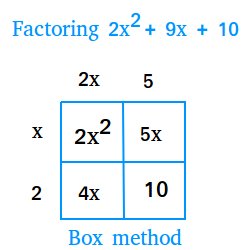To do the box method in math, simply draw a box and divide it into sections to multiply multi-digit numbers efficiently. This visual method simplifies complex multiplication problems, making calculations easier to manage. By using the box method, you can break down the process step by step and organize your work neatly for accurate results. Ready to master this handy math technique? Let’s explore the box method together and take your multiplication skills to the next level!
How to Do the Box Method in Math
Welcome to our guide on mastering the box method in math! The box method, also known as the area model, is a powerful visual tool that can help you multiply numbers efficiently and accurately. In this article, we will break down the box method step by step, providing you with clear explanations and examples along the way.
Understanding the Basics
Before we dive into the box method, let’s ensure we have a solid understanding of multiplication. Multiplication is a mathematical operation that combines groups of numbers to find a total. When using the box method, we break down the multiplication process into smaller, more manageable steps.
Setting Up the Box
To start using the box method, draw a large rectangle on your paper. Divide the rectangle into two or more smaller rectangles by drawing horizontal and vertical lines. Each small rectangle represents a place value in the numbers you are multiplying.
Breaking Down the Numbers
Let’s say we want to multiply 23 by 15 using the box method. In the large rectangle, draw two smaller rectangles horizontally for the number 23 and vertically for the number 15. This creates a grid with four smaller rectangles, each representing a part of the multiplication.
Filling in the Boxes
Next, fill in the individual boxes with the products of the corresponding digits. For the example of 23 by 15, write 2 in the top left box, 3 in the bottom left box, 1 in the top right box, and 5 in the bottom right box. Multiply the digits in each row and column to fill in the remaining boxes.
Calculating the Products
In the example of 23 by 15, you would multiply 2 by 1, which equals 2, and write the result in the top right box. Then, multiply 2 by 5, which equals 10, and write the result in the bottom left box. Repeat this process for the remaining boxes until all the boxes are filled.
Adding Up the Results
Once all the boxes are filled with the products, add up the numbers in each box diagonally from the top left to the bottom right. In our example, the products are 2, 6, 1, and 5. Add these together to get the final result of multiplying 23 by 15.
Practice Makes Perfect
Now that you understand the basics of the box method, it’s time to practice! Grab a pencil and paper, choose some numbers to multiply, and work through the steps we outlined in this article. The more you practice, the more comfortable you will become with using the box method in math.
Congratulations! You have learned how to do the box method in math. The box method is a valuable tool that can make multiplication easier and more visual. With practice and patience, you can become a box method master and tackle multiplication problems with confidence. Keep exploring different numbers and scenarios to sharpen your skills further. Happy multiplying!
Box Method Multiplication | 2-Digits x 2-Digits | Math with Mr. J
Frequently Asked Questions
How do you use the box method in math to multiply numbers?
To use the box method in math for multiplication, you first draw a box with the number being multiplied on top and the other number on the side. Then, you divide the box into smaller sections according to the place value of the digits. Multiply the numbers in each section and then add up the results to get the final product.
Can the box method be used for double-digit multiplication?
Yes, the box method can be used for double-digit multiplication. You simply create a larger box with two rows and two columns for two-digit numbers. Place each digit in its corresponding place value section within the box, then multiply and add as usual to find the product.
What are the benefits of using the box method for multiplication?
The box method is beneficial for multiplication as it provides a visual representation of the multiplication process, making it easier for students to understand. It helps break down the multiplication steps into smaller, manageable parts, reducing the chances of making errors. Additionally, the box method can be used for both simple and more complex multiplication problems.
Final Thoughts
In conclusion, mastering the box method in math involves creating a visual tool to multiply numbers efficiently. Start by breaking down the numbers into smaller units and organizing them in a grid or box. Fill in the boxes with the products of the corresponding units and add up the results diagonally to get the final answer. Practice is key to becoming proficient in applying the box method in math calculations.




